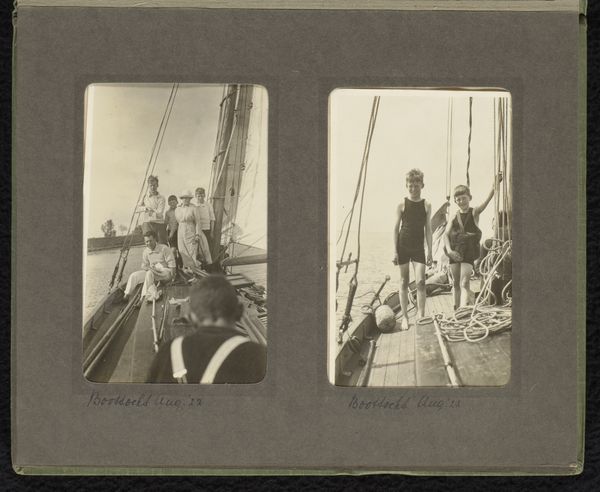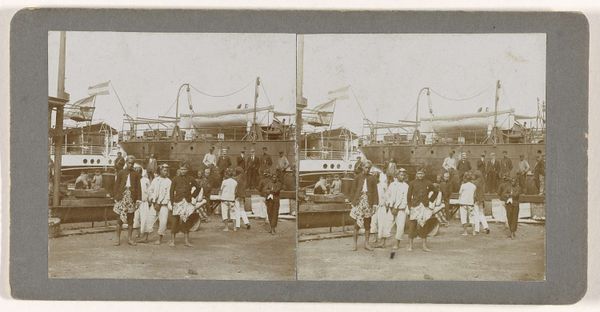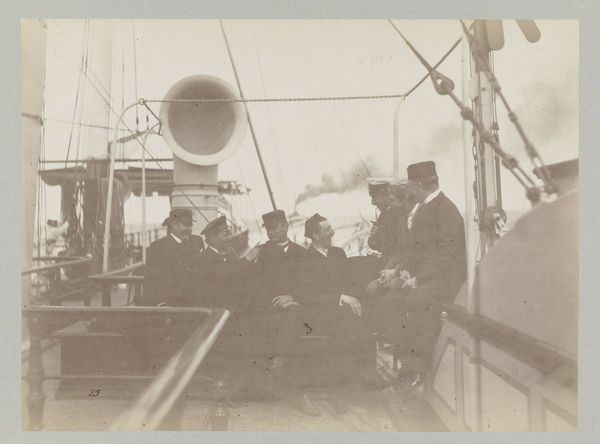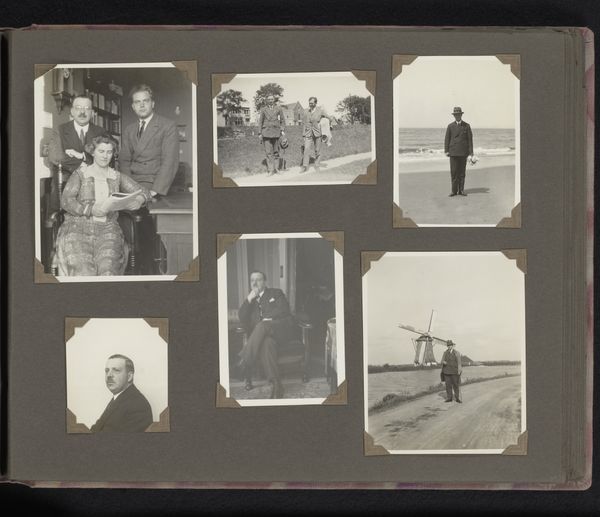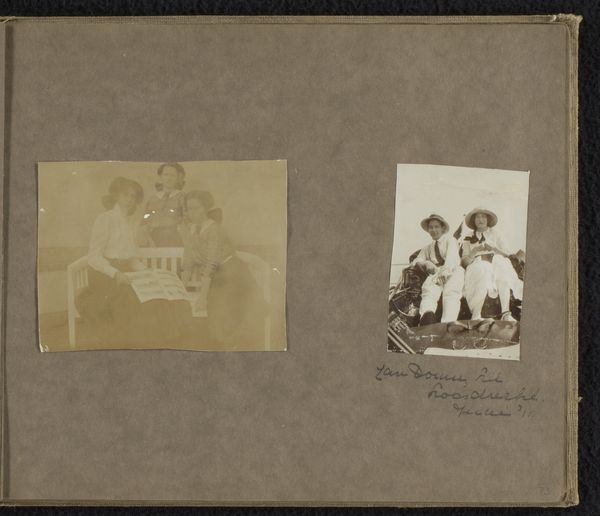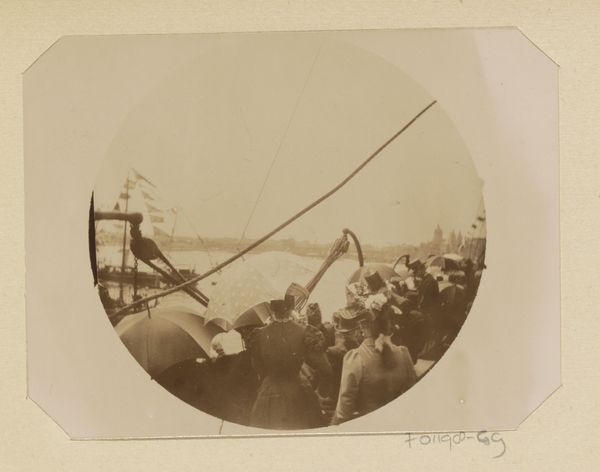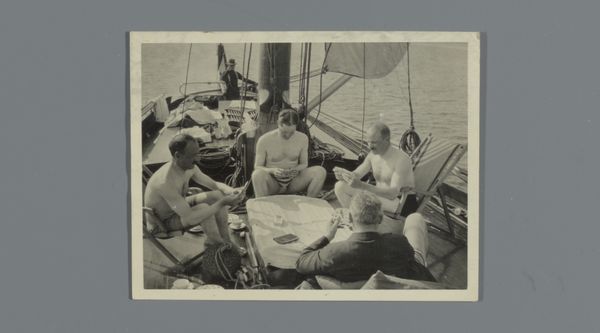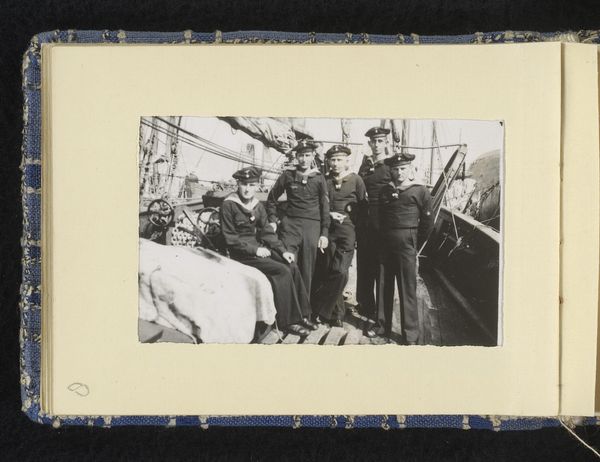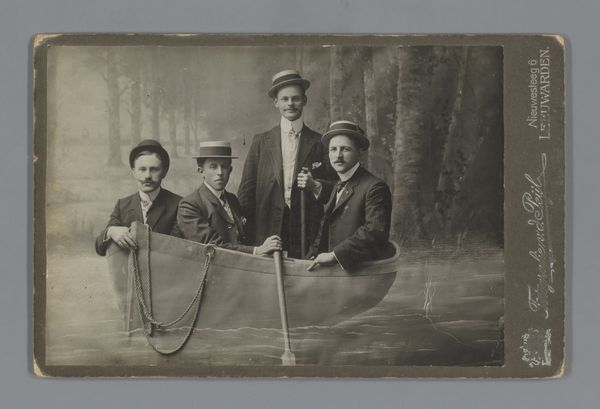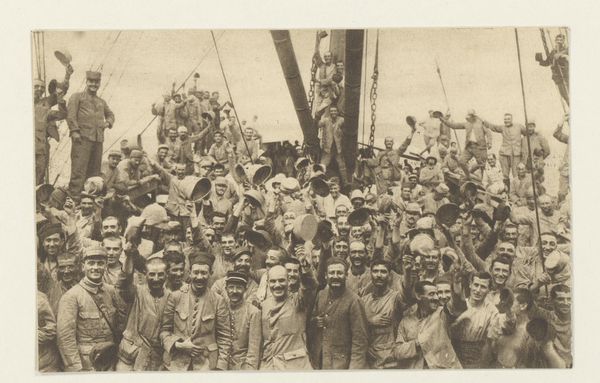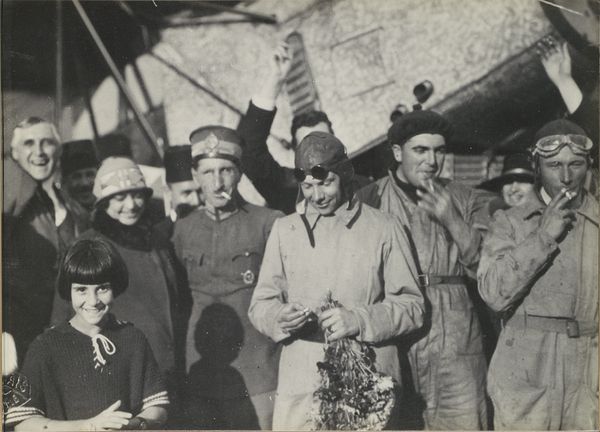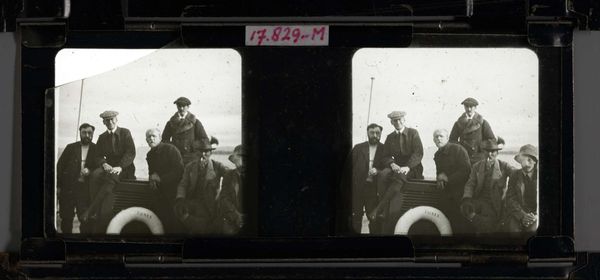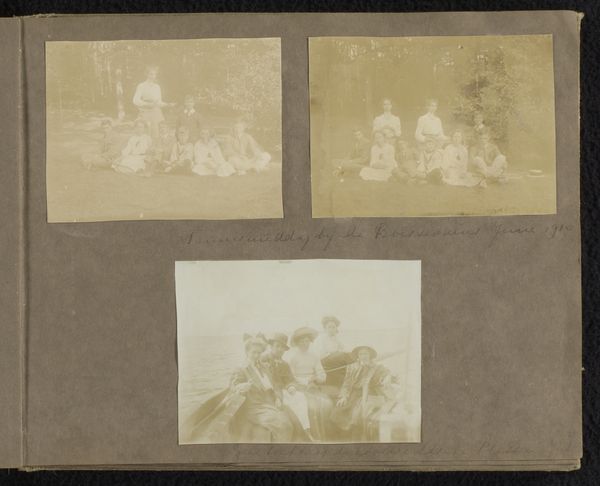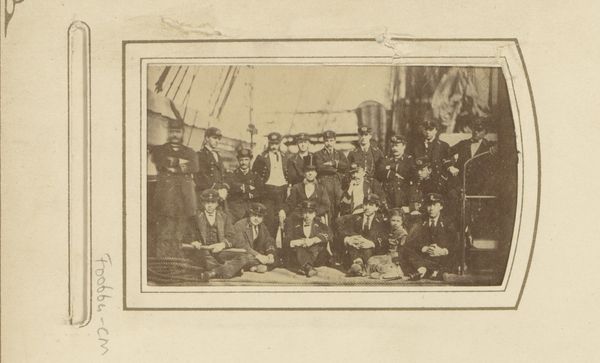
photography, gelatin-silver-print
#
portrait
#
photography
#
gelatin-silver-print
#
genre-painting
Dimensions: height 58 mm, width 86 mm
Copyright: Rijks Museum: Open Domain
Curator: What a captivating piece of vernacular photography! Here at the Rijksmuseum, we have "Five Sailors on a Sailing Ship," a gelatin-silver print likely captured sometime between 1940 and 1943. Editor: It makes me feel a little wistful, you know? A grainy snapshot of ordinary joy, juxtaposed with the uncertain backdrop of those war years. There's a strange timelessness about it too, those boys could be anyone, anywhere… Curator: Indeed. Considering the limitations and widespread availability of the technology and materials for developing gelatin-silver prints at the time, it certainly speaks volumes about photographic practices as a form of documentation available across societal strata. Editor: I imagine it might’ve been stuck on someone’s fridge door for years, capturing the memory of seafaring days. There is an inherent value that photography, often seen as documentary rather than expressive, allows these working class sailors and their experiences to be visible. The framing almost pushes us to question who has access to creating representation of these experiences and memories. Curator: Precisely, this challenges assumptions regarding “art” as the province of the educated, the moneyed. The accessibility of the medium and the mundane nature of this subject matter point towards a deliberate turn toward more widespread creative practices. Consider that at this moment, mass communication and the dissemination of photographs becomes more streamlined. Editor: And to think that this print, mass-produced at the time, now has a distinct weight because it’s an archive. The five of them huddle together almost awkwardly, like they don't know how to pose for the camera, their youthfulness is just amplified by the old photo and all of it, their outfits, the background seems foreign today. They didn’t set out to create art, but look at it! Curator: Which perhaps points to the social reality that such labor, on a sailing vessel, likely remained outside mainstream considerations about cultural work worthy of capturing and showcasing. Editor: Right. Makes you think about all the invisible hands. It brings history to life in a startlingly personal way. It's the real world captured on film. Curator: It prompts one to consider how technological advancement shaped working-class pastimes and practices, giving rise to more artistic pursuits from unforeseen sources. Editor: Definitely food for thought, or should I say, photos for thought!
Comments
No comments
Be the first to comment and join the conversation on the ultimate creative platform.
